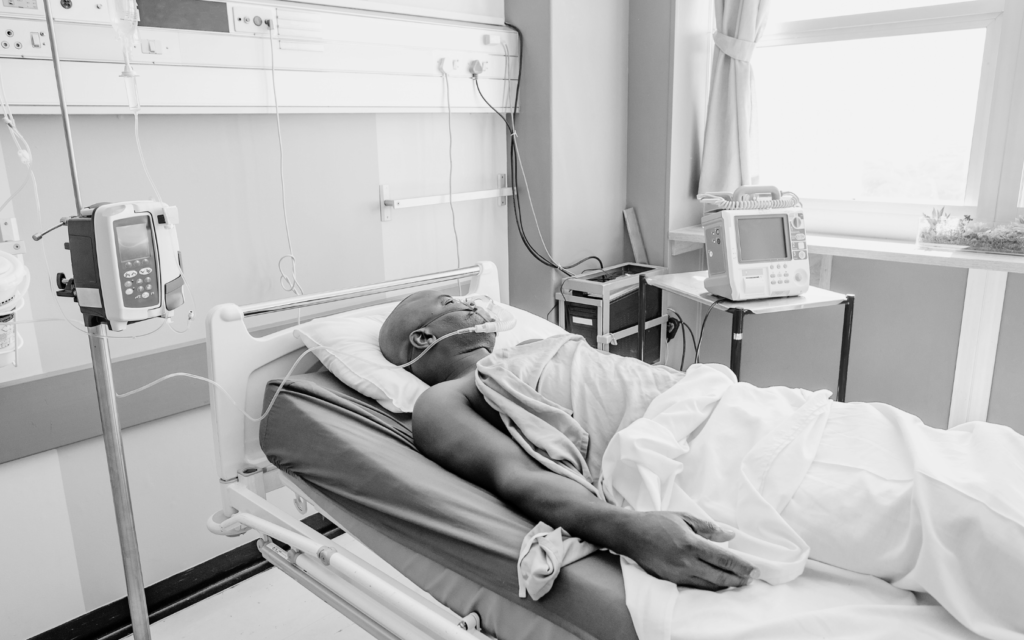You don’t go to a gym to get weak. Or to a restaurant to leave hungry. In the same way, you certainly don’t go to a hospital to get sick. But sometimes, going to the hospital can leave you worse for the wear—if you’re a victim of medical negligence.
Medical negligence is a major issue in the United States. Researchers at Johns Hopkins have said medical errors are the third leading cause of death. In this post, we’ll explore common medical negligence examples and how they can happen.

What is Medical Negligence?
Medical negligence happens when a healthcare provider, like a doctor or nurse, makes a mistake or fails to provide proper care, leading to harm or injury to a patient.
This can include things like giving the wrong treatment, making an incorrect diagnosis, or not following up with the right care after surgery.
Medical negligence isn’t just about mistakes. It also includes instances where a doctor doesn’t meet the basic standards of care that patients should expect. When medical negligence occurs, it can cause serious health issues or worsen a person’s condition.

Medical Negligence Examples
Medical mistakes usually aren’t intentional. Medical personnel might make them because they’re overtired, overworked, or maybe even improperly trained.
But that doesn’t excuse negligent actions. If you were injured because of something a physician did or didn’t do, you may have the right to sue. Now let’s examine some common medical negligence examples:
Medication Errors
Ever grab a tube of hand cream for toothpaste and squirt it onto your toothbrush? That’s a harmless (and funny) mistake. But switching up a patient’s medication can be a fatal or near-fatal error.
One woman who got an MRI at an Arizona imaging center almost died from a medication error. The technologist grabbed a bottle of sedative instead of contrast. After receiving a high dose of Valium, the patient went unconscious. She survived and filed a lawsuit against the imaging center.
Hospitals have protocols in place to help prevent such snafus, but they still happen. Medication mistakes make up 5% to 41.3% of all hospital admissions and 22% of readmissions after discharge.
Childbirth Negligence
Doctors can make mistakes during labor and birth, too. Medical negligence examples during childbirth include:
- Failing to recognize complications
- Not performing a necessary C-section in time.
- Improper use of forceps or vacuum to deliver a baby
- Failure to monitor vital signs during labor
- Delaying treatment for fetal distress
- Failing to control excessive bleeding
Medication errors can also happen during childbirth. For example, Incorrectly administering drugs like Pitocin (used to induce labor) can lead to overly strong contractions. Hampton & King recently won a large settlement for a family after Pitocin misuse left a baby with irreversible brain damage.
Anesthesia Errors
Where there’s surgery, there’s anesthesia. And where there’s anesthesia, mistakes can happen.
An anesthesiologist might administer too much anesthesia during surgery, causing the patient to go into cardiac arrest or not wake up from the procedure in time. This could lead to permanent brain or organ damage.
Mistakes involving anesthesia can cause nerve damage, brain damage, organ damage, coma, and death.
Misdiagnosis
One of the most common medical negligence examples is when doctors make the wrong call about a patient’s health.
For example, a patient arrives at the ER with chest pain. But the doctor dismisses it as indigestion, without conducting an electrocardiogram (ECG) or blood tests. The patient later suffers a heart attack that could have been prevented.
Surgery Errors
Surgery itself can be difficult to undergo and recover from. But imagine going through that whole ordeal, only to find out your surgeon operated on the wrong body part! It happens more often than you think.
Medical negligence examples in surgery include:
- Leaving surgical tools inside the body
- Unnecessary surgery
- Untreated infection after surgery
- Injuring another body part by accident during surgery
Infection Due to Poor Sterilization
Everything in a hospital, from sheets to surgical instruments, gets used by many different patients. Sterilization keeps infections from spreading. But improper sterilization can cause infections, sepsis, and even death.
Failure to Monitor
When you’re a hospital patient, doctors are supposed to keep close watch on your vital signs. Not properly monitoring a patient’s condition after surgery or during treatment can lead to complications.
Such was the case of one patient who lost his life post bronchoscopy. He was put in an unmonitored room, where no one noticed his worsening condition until it was too late.

Are You A Victim of Medical Negligence?
We hope you never find yourself a victim of the medical negligence examples above. However, should it ever happen to you, don’t hesitate to contact us for legal help.
Our firm focuses exclusively on medical negligence and malpractice. We have the expertise needed to handle even the most complicated cases. Schedule your free consultation today.




